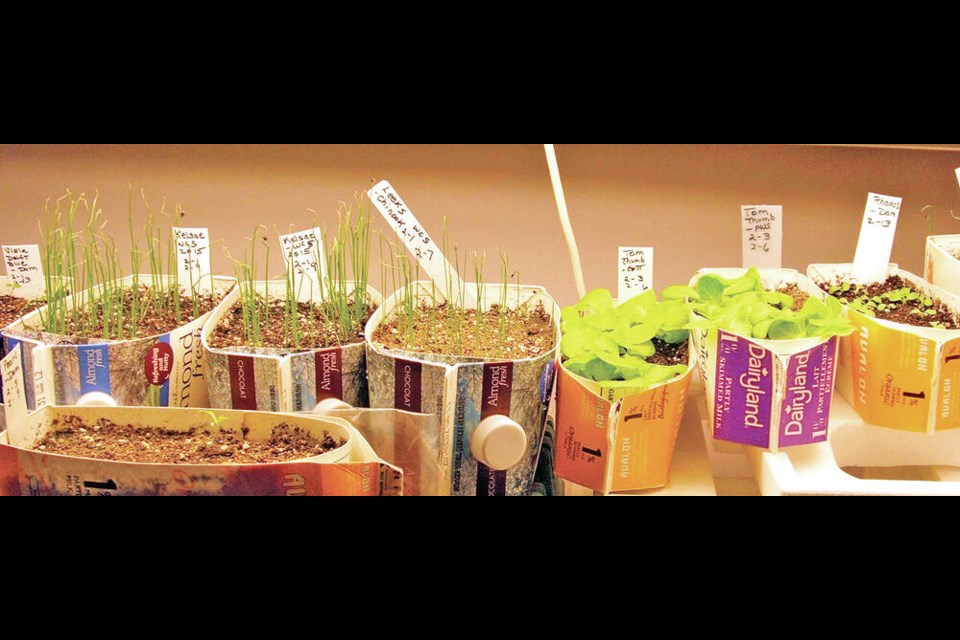Dear Helen: From reading your columns I believe you grow many of your own transplants. I am trying to grow more of my own each year. As the beginning of the indoor seeding season draws near, I am wondering whether you plan to alter your accustomed schedule in light of last year’s cold, wet spring and early summer. That unusual weather brought drastic delays in transplanting. Transplants from my earliest indoor seedings became almost too overgrown to use.
F.G.
It was a distressing time for many of us. Some of my transplants became so overgrown they were almost climbing out of their flats while soil and weather conditions remained impossible for moving them into the garden.
That troublesome period was much more devastating to local farmers and growers whose livelihoods depend on timely planting and harvesting of their crops.
I’ve been pondering the issue in your question for some time, wondering whether, or to what degree, to make changes to my usual indoor seeding, which I often begin during the last week in January, with violas and pansies, leeks and onions.
Most pansies and violas I’ve grown take 10 to 14 days to germinate, in darkness. Once they are up and growing, then tend to stay neatly in compact rosettes. And they can be moved to the bowl-shaped containers I use for them and placed in the shelter of the patio while the weather is still cool.
Seeding onions and leeks early is also not too risky. As soon as the seedlings are substantial enough to handle easily, but still young, I trim away the wispy bits at their tops and thin them enough to give them space to develop. I often trim them back a little as they elongate, and I give a final trimming immediately prior to transplanting. I’ve observed that a very slight trimming helps to thicken onion and leek transplants.
That said, as a precaution I’ll be delaying my initial indoor seedings until the first half of February this year. Along with the pansies, violas, onions and leeks I’ll sow sweet peas, snapdragons, early cabbage, cauliflower and Aspabroc broccolini as well as a few of my hardiest lettuces.
Because I do an enormous amount of indoor seeding, it is helpful to make as early a start as possible. And though I’ll be delaying the usual schedule just a little, in spite of last year’s miserable weather I’ll be employing an accustomed practice: Hope for, and expect, the best. Then deal with whatever happens with as much grace and equanimity as possible.
Dear Helen: A potted cyclamen I was given has bloomed at a cool window for weeks now. What should I do when it stops flowering? Can I keep it as a house plant? If so, how?
S.C.
Potted cyclamen are often discarded or composted when the flowers stop and the plant begins to die back, but they can be kept to flower again.
I bought a lovely cyclamen in bloom last fall. Kept cool and watered, it flowered over the winter and then, as cyclamen do, eventually stopped blooming and began dying back. The flowering season is fall to spring. Warmth triggers dormancy.
As the plant began dying down, I kept it cleaned of withered flower and leaf stems as I reduced watering. As temperatures outdoors rose to around 10 C, I set the pot in the light shade of a potting table’s lower shelf. Through the summer I gave the pot an occasional light watering, just enough to keep the tuber from shrivelling.
Late in the summer, as temperatures began cooling, I began checking the pot for new sprouts. As soon as they appeared, I replaced a top layer of planting mix with fresh soil and began watering more regularly. As flower buds began to show, I brought the plant in to a cool window to bloom.
The plant is still flowering, and new flower stems continue to emerge. I’ll set the potted tuber outdoors again in the spring, in the same place, and watch for fresh growth late in the summer.
At that point, I’ll repot the tuber — something I did not do last year. As a general rule the tubers need repotting only every two years. Simply settle a cyclamen tuber into a new pot at the same depth it was in the original pot.



